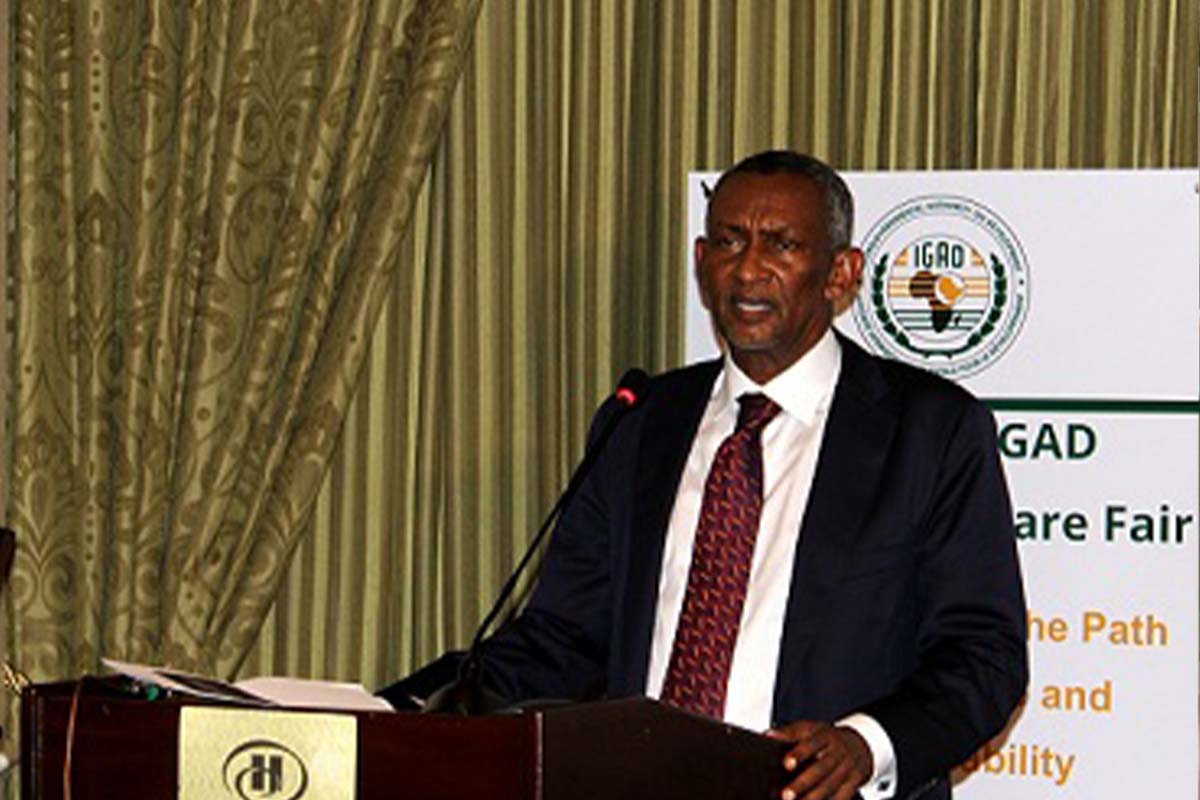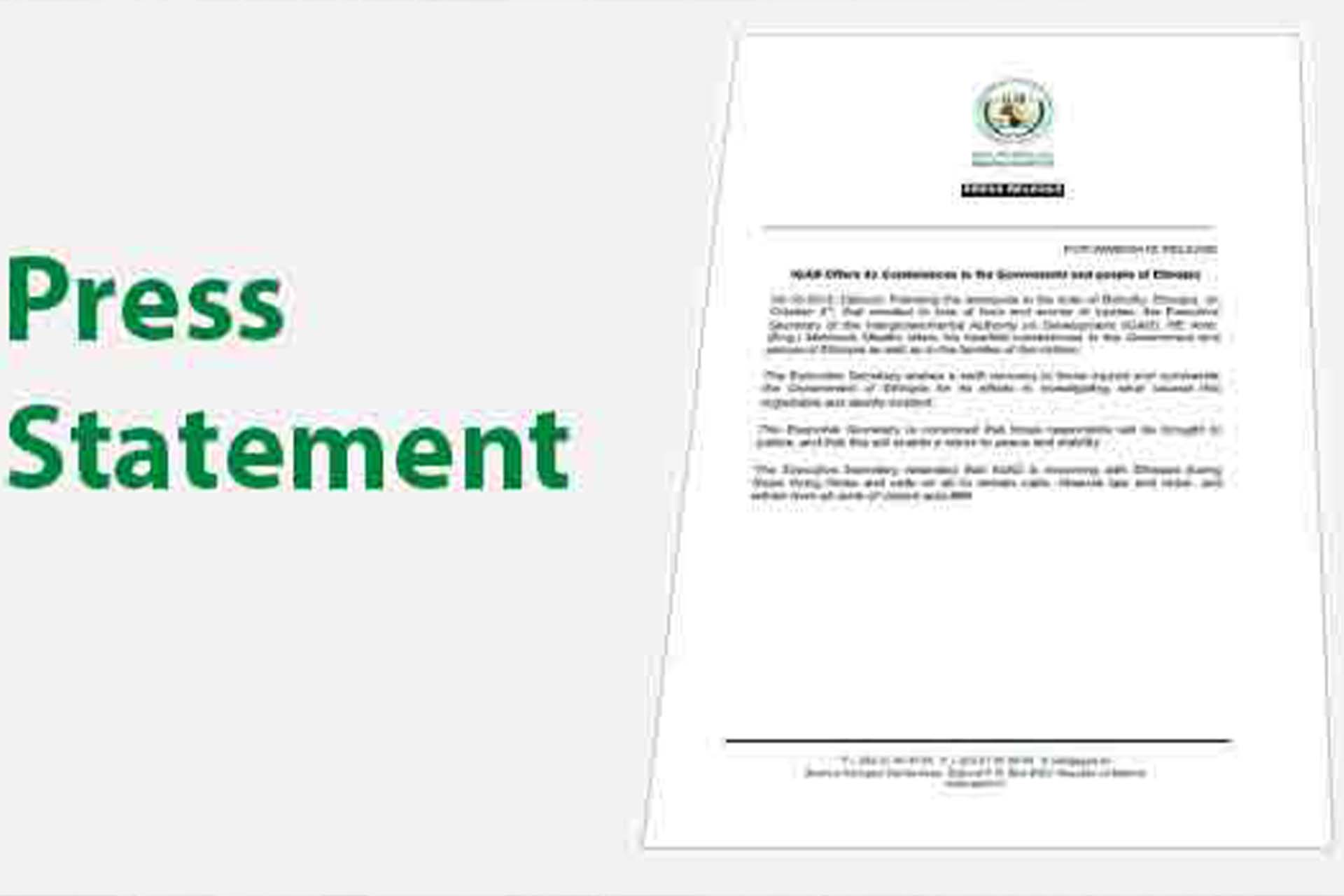Sept. 2, 2019, NAIROBI (Kenya): An estimated 27 million people – or 24% of the total food insecure people in the world– lived in seven of the eight countries in the IGAD region, according to a new report released by the Intergovernmental Authority on Development (IGAD) and the Food Security Information Network (FSIN).
A regional first, the report draws special attention to the plight of millions of people experiencing acute levels of food and nutrition insecurity in Djibouti, Ethiopia, Kenya, Somalia, Sudan, South Sudan, and Uganda. According to the report, there were three main drivers of food insecurity in East Africa: climatic shocks, conflict and economic instability.
The worst-affected countries in 2018 in terms of acute food insecurity were Ethiopia (8.1 million), Sudan (6.2 million) and South Sudan (6.1 million). In South Sudan, 59% of the population, or six out of ten people required urgent assistance to protect livelihoods, reduce food consumption gaps and malnutrition. In Somalia, more than one in five people (or 22% of the population) were acutely food insecure.
“The main drivers of acute food insecurity and malnutrition in our region are climate, conflict and economic instability. I call on IGAD specialized offices, Member States and partners to invest further in resilience, adaptation to climate change, conflict prevention and sustaining peace to overcome vulnerability and address the root causes of hunger and malnutrition” said Ambassador (Eng.) Mahboub Maalim, IGAD Executive Secretary at the launch.

The regional report serves as an important milestone towards delivering the commitment of the Intergovernmental Authority on Development (IGAD) to fight acute hunger and malnutrition in the region. It is based on the third annual Global Report on Food Crises (GRFC 2019) [Link] produced by the FSIN, a global initiative to improve food security and nutrition measurement and analysis, co-sponsored by the Food and Agriculture Organization (FAO), the World Food Programme (WFP) and the International Food Policy Research Institute (IFPRI).

The report was made possible by collaborative efforts between IGAD and agencies in the international humanitarian and development community, who shared data, analysis, knowledge and expertise regarding people facing food crises.
STATUS OF FOOD CRISIS – KEY HIGHLIGHTS:
2018
The aggregate number of acutely food insecure has increased every year since 2017.
The worst-affected countries in 2018 in terms of number of people in acute food insecurity were Ethiopia (8.1 million), Sudan (6.2 million) and South Sudan (6.1 million).
Climate shocks, conflict and economic turbulence were the main drivers of food insecurity in the IGAD region in 2018. Adverse climate conditions were the primary drivers in Ethiopia, Kenya, Uganda and Djibouti, affecting 11.9 million people. Conflict and insecurity were the main drivers in South Sudan and Somalia leading to 8.8 million people acutely food insecure. An economic crisis was the main driver in Sudan, where escalating food prices, sharp currency depreciation and fuel shortages led 6.2 million people to be acutely food insecure.
2019
As in 2018, below-average rains, conflict and economic crisis continue to drive food insecurity.
Ethiopia, Sudan and South Sudan are expected to remain among the world’s most severe food crisis in terms of people affected.
In comparison to peak 2018 levels, updated projections for 2019 as of July indicate that food insecurity levels will likely be higher in South Sudan and Sudan, remain stable in Ethiopia and Uganda, and be lower in Kenya and Somalia.
Additional investments in resilience and on adaptation to climate change are required to provide households with a buffer against future shocks and stop the cycle of recurring food crisis. Empowering woman, nourishing and educating children, improving rural infrastructure and reinforcing social safety nets and risk transfer are some of the key activities to build resilience in the region.
Information and technology can capture changes in food security – especially in fragile countries and contexts on a near real-time basis. Collecting and analysing data on vulnerable populations are vital to ensure a targeted and integrated response for multiple partners working to address in humanitarian, development and peace nexus.
In addition, investments in climate adaptation, conflict prevention and sustaining peace will save lives and livelihoods, reduce structural vulnerabilities and address the root causes of hunger and malnutrition.

